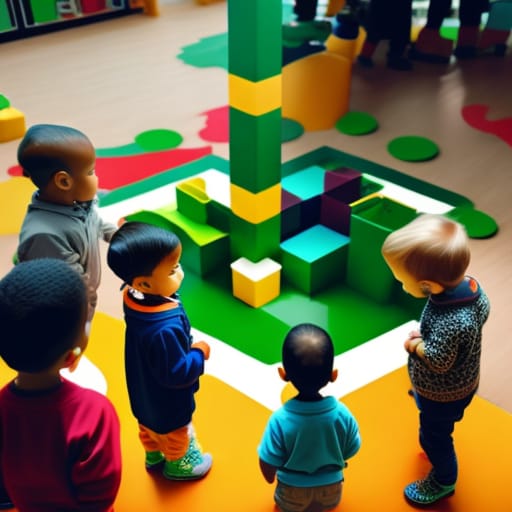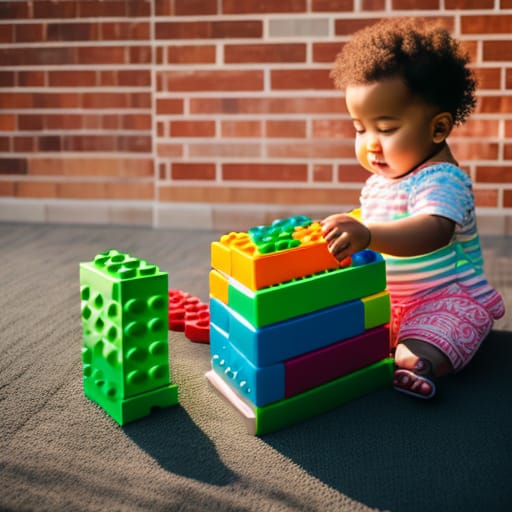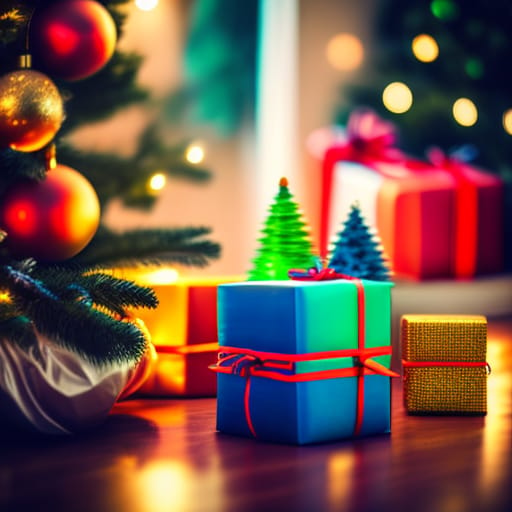Playing with blocks allows toddlers and preschoolers to creatively build and stack while developing essential cognitive, motor, and social skills. Choosing the right building blocks supports open-ended play that sparks your child’s imagination and fosters key developmental milestones. This beginner’s guide will explore the many benefits of block play and provide tips for selecting the best block sets to encourage learning through fun, hands-on construction projects.
Why Building Blocks are Important Play Essentials for Toddlers and Preschoolers
- Building blocks ranked #1 in top toys for improving creativity
- Stacking and arranging blocks develops cognitive skills like spatial awareness and problem solving
- Block constructions promote dexterity, bilateral coordination, and overall motor skills
- Imaginative block structures inspire storytelling, self-expression and social interactions
According to child development experts, few toys offer as many advantages as a set of classic wooden unit blocks or rainbow-colored plastic block stackers. Freeform building encourages open-ended play where children set their own goals, make their own rules, and engage in unstructured exploration and experimentation.
These types of self-directed block activities allow toddlers and preschoolers to:
- Improve hand-eye coordination and fine motor control
- Grasp basic mathematical and geometrical concepts like shapes, balance and gravity
- Enhance spatial visualization and structural planning abilities
- Develop vocabulary and language expression as they describe and narrate block creations
- Cooperate with others in co-creation, turn-taking and role assignment
- Regulate emotional responses and resolve differences through collaborative negotiation
With so many developmental upsides, it’s no wonder building blocks maintain such enduring popularity in early childhood environments.
Top 5 Benefits of Block Play for Toddler and Preschool Development
1. Creativity and Imaginative Play
Open-ended construction toys like blocks encourage innovation, ingenuity and inventive thinking. As toddlers stack, balance and arrange wooden blocks or interlocking plastic bricks in new ways, they engage their budding imagination and bring their wildest ideas to life. This creative experimentation builds a foundation for artistic experimentation, novel problem solving and design thinking.
2. Early STEM Learning
Playing with blocks introduces foundational STEM concepts including geometry, spatial reasoning, equilibrium, measurement, proportions and elementary architecture principles. As young builders manipulate various block shapes and sizes, they develop a concrete understanding of early math, science and engineering applications in an engaging, hands-on setting.
3. Language and Vocabulary Development
Describing their block constructions prompts children to attach words and contexts to objects, actions and emotions. As toddlers explain their creative process, they build essential narrative skills and ability to articulate and share ideas. Block play expands vocabulary as children incorporate descriptive words like stack, tall, short, wobbly, and names of block colors, specialized pieces and arrangement styles.
4. Collaborative Play Skills
Sharing blocks and co-designing structures requires cooperation, communication, role assignment, troubleshooting and negotiation between young partners. Constructing a castle together involves vital social skills like listening, turn-taking, sharing resources, voicing preferences and resolving differences. These interpersonal competencies form an important part of school readiness.
5. Problem-Solving and Critical Thinking
Figuring out how to build a stable tower that doesn’t topple over involves a fair bit of trial-and-error. Every block creation poses spatial, structural and physics challenges for little engineers to creatively troubleshoot. This process strengthens vital cognitive abilities like critical thinking, analysis, mapping solutions, recognizing patterns and learning from mistakes.
So don’t underestimate the simple wooden cube! Building blocks offer the ideal launchpad for developing a multitude of key skills kids need to thrive.

Choosing the Best First Building Blocks by Age
Not all block sets are created equal. Consider your child’s age, developmental stage, interests and abilities when selecting starter blocks to ensure an engaging play experience.
For younger toddlers 12-24 months, choose blocks withsafety in mind. Avoid small pieces that pose a choking hazard and give preference to larger, lightweight blocks that are easy for little hands to grasp and carry. At this stage, focus is on gross motor skills like picking up, moving and sorting objects. Look for chunky, colorful building bricks, soft activity cubes or foam alphabet blocks with rounded corners.
Age-appropriate block sets include:
- Soft building block sets
- Jumbo/oversized building blocks
- Foam alphabet or number blocks
- Basic wooden shape sorter sets
For older toddlers 2-3 years, combine traditional wooden unit blocks with engaging themed interlocking block sets that allow for both freeform and modeled construction. Look for preschool building sets that introduce early educational concepts like numbers, letters, colors, and shapes. Rounded edges are still preferred for safety.
Ideal block sets for this age include:
- Classic wooden unit blocks
- Colorful interlocking block sets
- Themed build-along kits (farm, town, castle, etc)
- Basic geometric shapes and pattern blocks
- Giant floor puzzles (turning into a city scene, racetrack, etc)
For preschoolers 3-5 years, introduce more specialized pieces to spark imaginative role play and storytelling. Scale and detail diversity in blocks helps nurture more mature building skills and complex creations. Continue supervision for safe and collaborative social block play.
Building block sets to look for:
- Detailed interlocking building sets with specialized pieces
- Train track sets with bridges, tunnels and accessories
- Community helper/city life figurines and vehicles
- Advanced wooden building bricks with patterns
- Educational ABC/123 blocks focused on early literacy numeracy
Selecting the right beginner building blocks provides an engaging, interactive gateway into the wonderful world of construction play!
10 Best Building Block Sets for Toddlers and Preschoolers
| Block Set | Description | Price |
|---|---|---|
| 1. Melissa & Doug Jumbo Cardboard Blocks | – Oversized lightweight blocks perfect for little hands – Gentle canvas construction safe for kids | $19.99 |
| 2. Hape Wooden Baby Building Blocks | – Colorful chunky wood blocks with storage pouch – Accessories for open-ended construction | $39.99 |
| 3. Magna-Tiles Clear Colors 100 Piece Set | – High-quality transparent magnetic building pieces – Develops spatial skills, creativity, and logic | $149.99 |
| 4. Play22 Soft Sensory ABC Blocks | – Super soft squishy foam alphabet cubes – Great for water play too! | $29.99 |
| 5. Janod My First Wooden Blocks | – 40 handcrafted beech wood building pieces – Unique interleaving dovetail design | $34.95 |
| 6. Little Partners On The Go Build Along Playset | – Themed interlocking plastic bricks with storage case – Fun, modeled structures for early building | $29.99 |
| 7. Grimm’s Rainbow Wooden Building Blocks | – Beautiful natural wooden starter blocks – 10 different colors, 20 blocks total | $34.95 |
| 8. Boxiki Kids Cardboard Construction Blocks | – Lightweight jumbo-sized DIY building bricks – Build creatively without noise or mess | $24.99 |
| 9. PicassoTiles 60 Piece Building Blocks Set | – Unique shapes ideal for teaching spatial skills – Magnets allow creation of intricate structures | $39.95 |
| 10. Battat Parking Tower Wooden Block Set | – Colorful wooden building bricks with rubber tires – Promotes imaginative play and dexterity | $19.99 |
With top-rated options from trusted brands in every budget range, you’re bound to find the ideal set of first blocks to kickstart your little builder’s construction learning and maximise playtime enjoyment!
“We got these for my 2.5 year old’s birthday and she’s been entertained for hours building structures and making up little stories. Great quality and perfect way to develop creativity and motor skills” – Becky, Amazon customer
“Bought Magna-Tiles for my preschool classroom and the kids absolutely love them! Lots of math talk as they describe the shapes…great cross-curricular material.” – Sarah B., teacher
Setting Up a Block Play Activity Center at Home
Once you’ve selected some starter block sets, dedicate space for your toddler or preschooler to engage in regular constructive play. Mapping out a designated block building station helps define block playtime and keeps all the pieces conveniently accessible.
Here are 5 key elements to incorporate when designing an effective block play center at home:
- Open Floor Space: Set up the building area on a flat, stable surface with plenty room for structures to spread out. Layer rugs over hard floors for comfy play.
- Storage: Clear labeled bins keep loose blocks organized and allow for easy clean-up. Mount shelves or rack at a low height for kids to access.
- Play Materials: Include block sets plus accessories like toy cars, signs, people and animals to enhance imaginative roleplay. Rotate toys to maintain novelty.
- Inspirational Resources: Place related playbooks or construction references within reach to spur block project ideas.
- Defined Boundaries: Use floor mats, toddler fences or corner placement to contain the building space and prevent stray pieces from scattering and getting lost around the home.
Pro Tip: Involve kids in organizing their construction zone to build ownership, responsibility and developmental skills!
Keeping your toddler’s vibrant imagination and curiosity fueled with a rich, block-building environment pays back over and over again in crucial developmental gains today and that all-important school readiness edge tomorrow!

Final Thoughts on Cultivating Open-Ended Block Play
Free-range building with blocks offers toddlers and preschoolers a screen-free activity centered around hands-on learning, constructive trial-and-error and peer interaction. Guiding your child’s block explorations with wisdom – not intervention – allows their innate creativity to flourish while developing the critical developmental skills necessary for healthy growth and future success.
Foster open-ended block play by:
- Following interest-led play cues rather than imposing structured projects
- Asking open-ended questions and sharing observations, not praise or critique
- Allowing creations to stand overnight or longer to extend play narratives
- Supporting collaborative community builds with peers and siblings
- Capturing imaginative stories your child shares about structures through photos, videos or transcripts for them to “read back” and build language skills
The simple act of balancing one block atop another ignites a complex chain reaction of developmental benefits that unfold differently in every child. So let the building begin!
Frequently Asked Questions About Building Blocks
What’s the difference between wooden blocks and plastic blocks?
Wooden blocks offer timeless, back-to-basics constructive play with natural tactile appeal…
How many blocks are recommended for toddlers?
For children under 3, start with 20-30 blocks in medium or large-sizes to prevent frustration or safety risks…
What to do with old blocks?
Outgrown blocks in still usable condition can donated to local daycares, nonprofit benefit shops, charities like Toys for Tots to extend value and support children in need…
How do blocks help develop motor skills?
Manipulating and stacking various sized blocks improves hand-eye coordination, bilateral coordination, pincer grasps, and overall fine and gross motor skills…
Should I teach my toddler patterns with blocks?
Around age 2, introduce simple patterns like tower, flat row, tower. Build the sequence and then pause for them to repeat the pattern. This pre-math skill builds visual-spatial skills key for reading, writing and geometry.
How can I extend my preschooler’s block play at home?
Incorporate related props like signs, toy people and vehicles, construction tools, blueprints, dress-up outfits or books on structures, geography, maps, etc. This fuels the imagination for more complex block play themes.
Is it okay for siblings to play blocks together?
Joint block construction introduces vital social skills like cooperation, sharing resources, and problem resolution. However,expect disagreements over designs. Guide negotiations but let older kids resolve conflicts to build life skills. Oversee closely if aggression arises.
